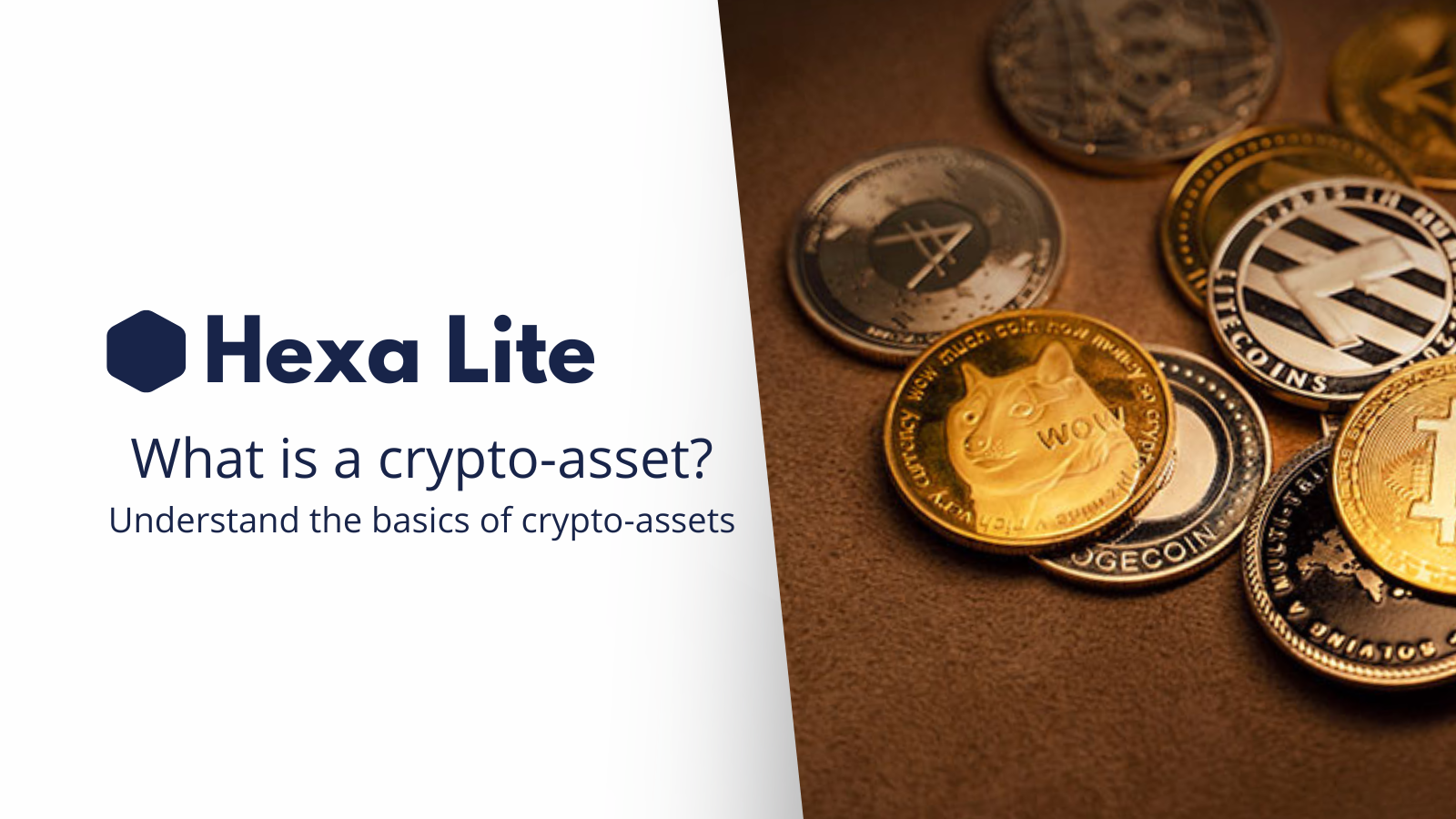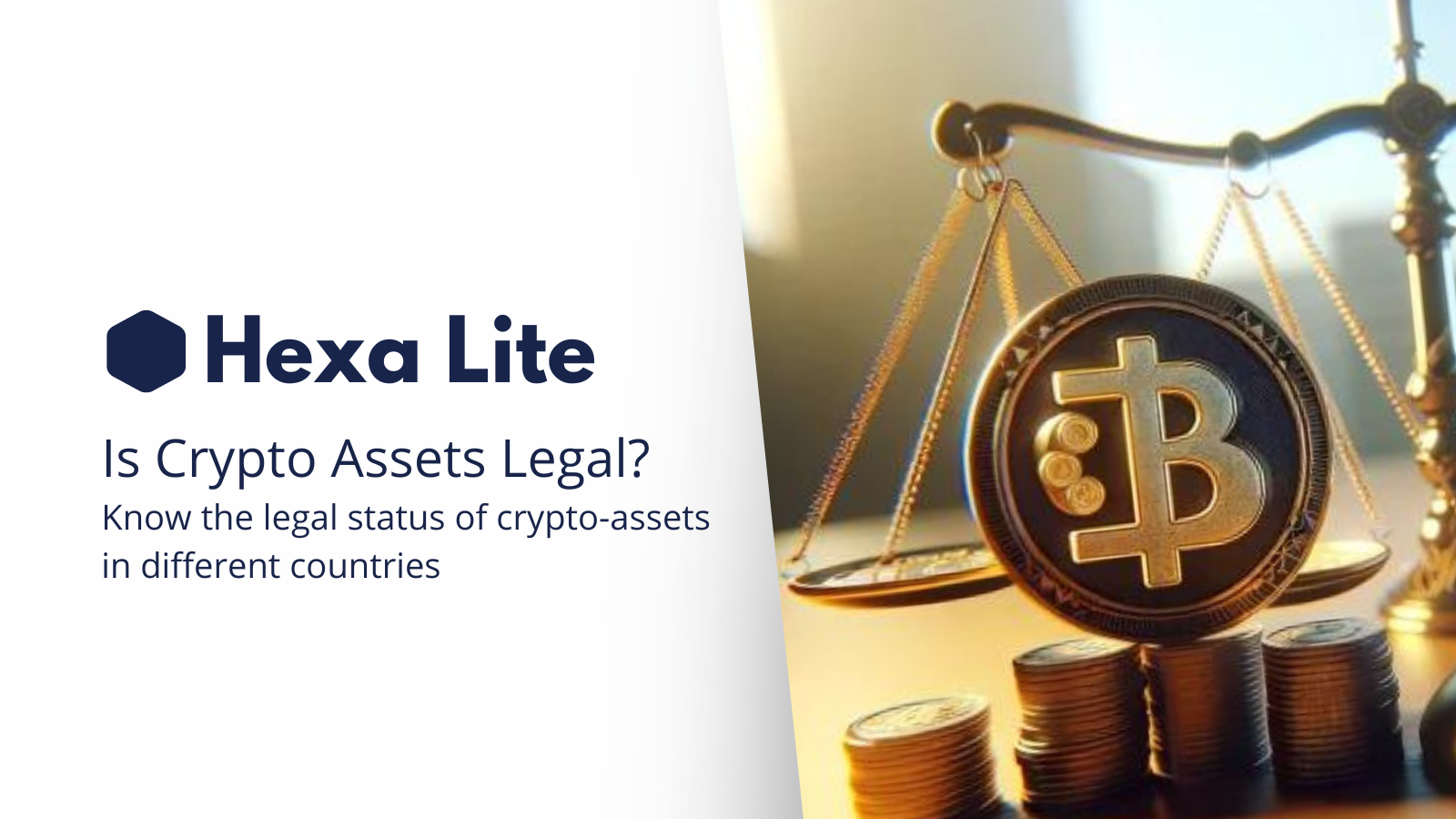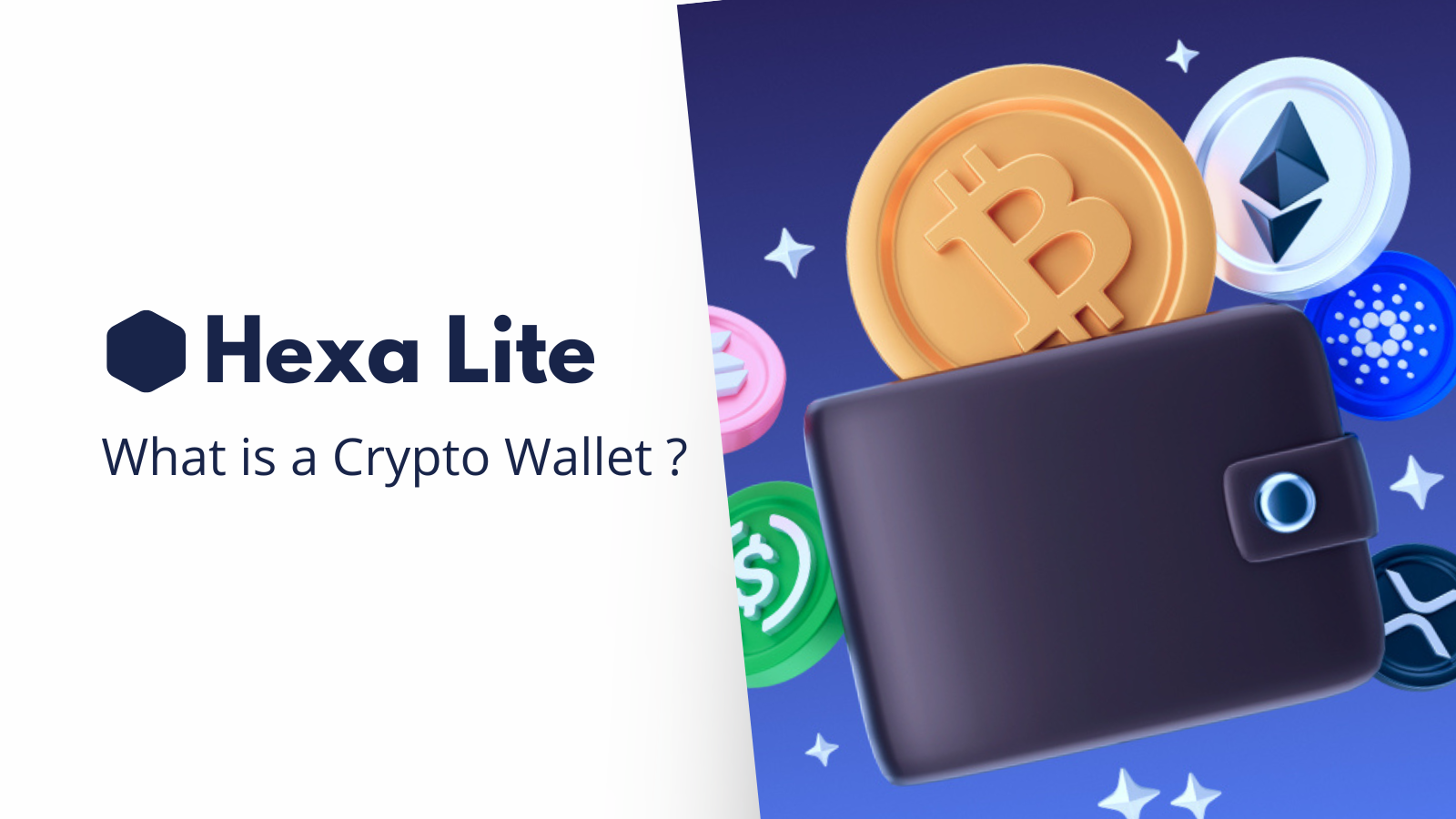· 6 min read
What is a crypto-asset? Understand the basics of crypto-assets
Learn what a crypto-asset is and how it works. Discover the different types of crypto-assets and how to invest in them.

In the realm of finance and digital currencies, the term “crypto-asset” has gained significant attention. But what exactly is a crypto-asset, and how does it differ from traditional assets like stocks or bonds?
At its core, a crypto-asset is a digital or virtual asset that utilizes cryptographic technology to secure transactions and control the creation of new units. Unlike traditional currencies issued by governments (fiat currencies), crypto-assets are decentralized and operate on blockchain networks.
Here are the key components of crypto-assets:
1. Digital Nature: Crypto-assets exist purely in digital form and do not have a physical counterpart like cash or gold. They are stored and transferred electronically, typically using blockchain technology.
2. Decentralization: Most crypto-assets operate on decentralized networks, meaning they are not controlled by a single authority, such as a government or financial institution. Instead, transactions are verified and recorded by a distributed network of computers (nodes) using consensus mechanisms like proof of work or proof of stake.
3. Blockchain Technology: Crypto-assets are built on blockchain technology, which is a distributed ledger that records all transactions across a network of computers. This technology ensures transparency, immutability, and security of transactions.
4. Cryptography: Cryptography plays a crucial role in securing crypto-assets. Transactions are encrypted to protect sensitive information and ensure the integrity of the network. Public and private keys are used to verify ownership and facilitate secure transactions.
Types of Crypto-Assets:
1. Cryptocurrencies: These are digital currencies used as a medium of exchange for goods and services. Bitcoin (BTC) and Ethereum (ETH) are examples of cryptocurrencies.
2. Tokens: Tokens represent assets or utilities on a blockchain network and can serve various purposes such as access to services, voting rights, or ownership of digital assets. Examples include ERC-20 tokens on the Ethereum network.
3. Digital Securities: These are tokenized versions of traditional financial instruments like stocks, bonds, or real estate. They offer the benefits of blockchain technology, such as increased transparency and liquidity.
4. Non-Fungible Tokens (NFTs): NFTs are unique digital assets that represent ownership or proof of authenticity of digital or physical items such as art, collectibles, or virtual real estate.
Advantages of Crypto-Assets:
Global Accessibility: Crypto-assets can be accessed and transferred anywhere in the world with an internet connection, providing financial inclusion to people who may not have access to traditional banking services.
Security: Blockchain technology ensures that transactions are secure, transparent, and tamper-proof, reducing the risk of fraud and hacking.
Decentralization: By eliminating the need for intermediaries like banks or payment processors, crypto-assets offer greater control and autonomy over one’s finances.
Innovation: The blockchain industry is constantly evolving, leading to the development of new financial products, services, and applications that can revolutionize various industries.
How to Invest in Crypto Assets
Investing in crypto assets can be an exciting but daunting prospect for newcomers. Here are some steps to help you get started:
1. Educate Yourself: Before investing, take the time to understand the fundamentals of cryptocurrencies and blockchain technology. Research different projects, learn about their use cases, and understand the risks involved.
2. Choose a Reliable Exchange: Selecting a reputable cryptocurrency exchange is essential for buying, selling, and storing crypto assets. Look for exchanges that offer security features, regulatory compliance, and a user-friendly interface. You can also consider using decentralized exchanges (DEXs) for added more privacy and control over your funds.
3. Create a Wallet: To store your crypto assets securely, you’ll need a digital wallet. There are various types of wallets, including hardware wallets, software wallets, and mobile wallets. Choose one that meets your security and convenience needs. This is a crucial step to protect your investments from hacks or theft. Get you own custodial wallet will be the best option to store your crypto-assets securely and safely. To create a wallet, you can use a software wallet provider like Metamask, Rabby, Trust Wallet, or using an hardware wallet like Ledger or Trezor. If you want to create your wallet simply, you can use Hexa Lite to create your Custodial Wallet using your email or social media account.
4. Diversify Your Portfolio: As with any investment, diversification is key to managing risk. Consider spreading your investments across different cryptocurrencies, industries, and asset classes to minimize potential losses. This will help you to reduce the risk of losing all your investments in case of a market crash. You can also consider investing in stablecoins (USDT, USDC, DAI etc…) or other less volatile assets to hedge against market fluctuations.
5. Conduct Due Diligence: Before investing in a particular cryptocurrency, conduct thorough research on the project, its team, and its technology. Look for red flags such as lack of transparency, questionable partnerships, or unrealistic promises. Consider factors like market cap, trading volume, and community support to assess the project’s potential for growth. If you’re unsure about a project, seek advice from experienced investors or financial advisors or pass on the investment.
6. Stay Informed: The cryptocurrency market is highly volatile and constantly evolving. Stay up to date with the latest news, market trends, and regulatory developments to make informed investment decisions. Follow reputable sources like CoinDesk, CoinTelegraph, or CoinAcademy for reliable information. Don’t rely on social media or forums for investment advice, as they can be biased or misleading.
7. Start Small: If you’re new to crypto investing, start with a small amount of capital that you can afford to lose. As you gain confidence and experience, you can gradually increase your investment. Avoid investing large sums of money without a clear strategy or understanding of the market. Avoid investing without do your own research and analysis.
8. Practice Risk Management: Set clear investment goals, establish stop-loss orders, and avoid investing more than you can afford to lose. Crypto markets can be unpredictable, so it’s essential to manage your risk carefully. Consider using tools like dollar-cost averaging or setting a target allocation to rebalance your portfolio periodically. Risk management is crucial to protect your investments and avoid emotional decision-making. This is the most important part and the key to success in investing in crypto-assets.
9. Monitor Your Investments: Regularly review your portfolio and adjust your strategy as needed based on market conditions and your investment objectives. Consider using tools and analytics to track your holdings and performance. Stay disciplined and avoid making impulsive decisions based on short-term price movements. Keep a long-term perspective and focus on your investment goals.
10. Be Patient: Investing in crypto assets can be a long-term journey. Don’t expect overnight success, and be prepared for periods of volatility and uncertainty. Stay focused on your goals and remain patient during market fluctuations. Dont panic sell or buy, stay calm and stick to your investment plan. Rremeber that the crypto market have an cycle of bull and bear market, so be patient and wait for the right moment to buy or sell.
By following these steps and staying informed, you can navigate the world of crypto investing with confidence and make informed decisions to grow your wealth over time.
Conclusion
In conclusion, crypto-assets represent a new and innovative form of digital value that is reshaping the financial landscape. Understanding the basics of crypto-assets is essential for anyone looking to participate in this rapidly growing ecosystem.



